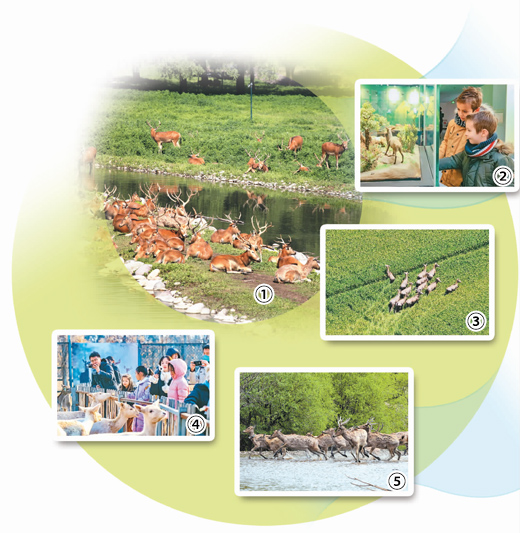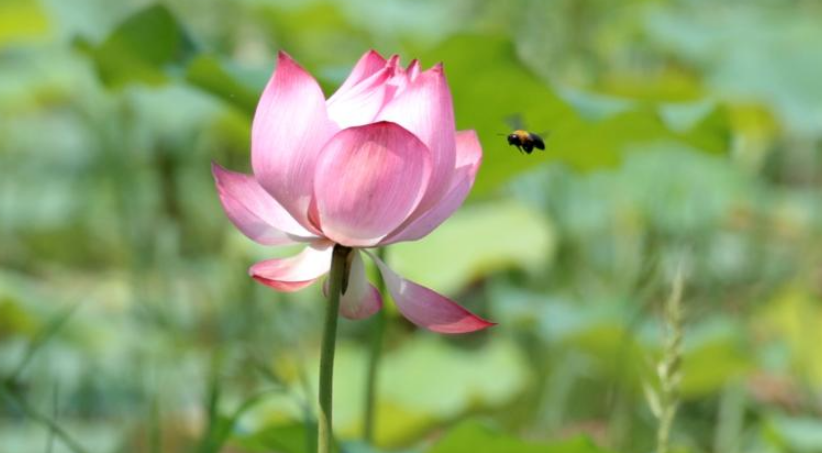Beijing’s Nanhaizi Milu Park dedicated to protection of milu deer

①: Milu deer rest at the Nanhaizi Milu Park in Daxing district, Beijing. (Photo courtesy of the Nanhaizi Milu Park)
②: French children visit a milu deer exhibition at the Nanhaizi Milu Park in Daxing district, Beijing. (Photo courtesy of the Nanhaizi Milu Park)
③: Photo taken on July 4, 2024 shows a herd of milu deer in Jiangxiang town, Nanchang county, east China’s Jiangxi Province. (Photo/Xinhua)
④: Visitors watch milu deer at the Nanhaizi Milu Park in Daxing district, Beijing. (Photo courtesy of the Nanhaizi Milu Park)
⑤: Photo shows a herd of milu deer at the Daqing Mountain National Nature Reserve in north China’s Inner Mongolia Autonomous Region. (People’s Daily/Wang Zheng)
In the Daxing district of Beijing, milu deer, also known as Pere David’s deer, and other wild animals have found a haven - the Nanhaizi Milu Park, China’s first nature reserve dedicated to free-range milu conservation.
“Nanhaizi was a royal hunting ground during the Yuan, Ming, and Qing dynasties. In 1985, the Beijing Milu Ecological Research Center was established on the site of the former royal hunting ground,” said Bai Jiade, director and researcher at the center.
Bai added that the park, spanning 60 hectares, also serves as a museum and a model for restoring natural ecological environments.
Bai emphasized the milu deer’s vital role in the ecosystem. “Protecting milu deer not only benefits a single species but maintains overall ecological balance,” Bai said, noting that the deer helps control the overgrowth of reeds and contributes to the growth of aquatic life, thus forming a virtuous cycle.
The milu deer is native to China and is known for having a unique appearance. A narrow face like a horse, antlers unlike those of any other deer, broad hooves like cattle, and long tails like donkeys, have earned the animal the nickname “four unlikes” given how the different parts of its body do not seem to match.
Historically, the deer were found widespread across the Yangtze River basin and the Yellow River basin of the country. Due to climate change and hunting, the number of milu declined greatly during the Han Dynasty, and it became extinct in China during the early 20th century, explained Wang Weisheng, director general of the flora and fauna department of the National Forestry and Grassland Administration.
The deer’s story of recovery in China is quite legendary, as they were reintroduced to China using a small population located abroad, explained Hu Jining, head of the exhibition department of the Beijing Milu Ecological Research Center.
In 1865, Jean Pierre Armand David, a French missionary, brought some milu deer to Europe, where the species gained international fame. In around 1900, the UK’s Duke of Bedford collected the world’s remaining 18 milu deer and placed them at Woburn Abbey in England, saving the deer from extinction.
On Aug. 24, 1985, the first batch of 20 milu deer gifted by the UK were taken to Nanhaizi. Thanks to effective conservation efforts, the population of the species since it was reintroduced to China 39 years ago has increased from over 70 to more than 10,000 wild and captive deer.
According to Bai, to protect the endangered species, researchers have adopted a three-step strategy of population growth, ex-situ conservation and rewilding. This three-step strategy has helped to overcome challenges like inbreeding, feeding management and disease control.
Under the care of workers at the Nanhaizi Milu Park, the deer population in the park has maintained rapid growth. In 1996, the number of the species in the park increased 5.5 times to 250. So far, the park is still home to more than 160 milu deer, after sending nearly 600 milu deer to other places over the past years.
On March 1, 2024, 20 milu deer from the Nanhaizi Milu Park arrived in north China's Inner Mongolia Autonomous Region. Several days later, a milu deer fawn was born in southeast China’s Fuzhou Province.
In 2018, China released 47 milu deer into the wild in the wetland around Poyang Lake in east China’s Jiangxi Province. Three years later, 20 milu deer were released into the wild in the Daqing Mountain in Inner Mongolia. In 2022, nine milu deer fawns were born at the Daqing Mountain National Nature Reserve in the autonomous region. It was the first generation of offspring born to the milu deer that were released into the wild in the region.
China’s milu conservation achievements are globally recognized, hailed as a “Chinese model for global wildlife conservation” and a species relocation success story.
The reintroduction of milu deer epitomizes China’s biodiversity conservation and provides a reference for the protection of other endangered species worldwide, said Elizabeth Maruma Mrema, executive secretary of the United Nations Convention on Biological Diversity, at the fourth Beijing International Milu Culture Conference held in Beijing in 2021.
In recent years, the Nanhaizi Milu Park has been hosting an increasing number of themed activities, aimed at inspiring more people to treasure and protect nature. The park has played a crucial role in scientific research and science popularization, continuously contributing to the goal of achieving harmony between humanity and nature.
The Milu deer has long been regarded as an auspicious animal in China. To better spread Milu deer culture, the Nanhaizi Milu Park has launched a wide range of cultural and creative products themed on the species.
While committing itself to protecting milu deer and spreading milu culture, the park has attached great importance to international exchanges and sharing experiences with global conservation organizations.
The park has become an important base for wildlife protection, publicity and education, attracting over 500,000 visitors annually from around the world.
Photos
Related Stories
Copyright © 2024 People's Daily Online. All Rights Reserved.









